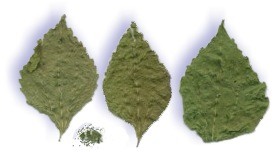
|
||
|
|
Guascas
|
|
|
The botanical name is Galinsoga parviflora linn, from the
Compositae family, related to the margaritas and the aster.
It was described for the first time by the illustrius botanist Hipolito Ruiz Lopes y Jose Antonio in 1794, who named the genus in honour of Dr. Mariano Martinez de Galinsoga, a director of the botanical garden in Spain. According to studies about the Galisongas distribution, its origin is Mexican where a diverse and complex taxonomy can be found. There are many Galinsogas, but the Parviflora, and its cousin the Quadriradiata, are the most famous in the international market. The GUASCAS are typically distributed by humans. Agriculture and the construction of roads helps them to spread easily. They are now found in regions with warmish temperature in continental America (north, central south). In Canada (Toronto & Montreal) you can find them growing in the wild as a fast growing weed in the city as well as in the countryside. They grow from the month of June to October, so they are called perennial weeds. In Colombia you can find them all year round in the Los Andes mountains. It is especially used by the people that live in the region of Condinamarca, where the capital Santafe de Bogota is located. Because of the fact that Ruiz and Pavon sent the seeds to a herbarium in Madrid and Paris in 1794, the Guascas spread also as wild weed in Europe, from England to Hungary. It is also now established in India, Nepal, Japan, the Phillipines, Australia, and parts of Africa. As a final note, the use of GUASCAS in Colombia has been to prepare soups, especially a very traditional soup made in Bogota called Ajiaco. Without the Guascas, with its unparalled flavour, it can't be said that the soup is called Ajiaco. So for the aficionados that live outside this beautiful country, now you know, look in your backyard, if you can recognize the Guascas. El nombre botánico es : Galinsoga parviflora Linn de la familia Compositae parienta de las margaritas y del aster. Fue descrita por primera vez por los ilustres botánicos Hipólito Ruiz López y José Antonio en 1794, quienes nombraron al genus en honor del Dr. Mariano Martínez de Galinsoga, un médico español que era el director del Jardín Botánico de Madrid. Según estudios sobre las Galisongas, se sabe que son oriundas de México, país donde se encuentra la más grande diversidad y complejidad taxonómica. Hay muchas Galinsogas, pero la Parviflora y su prima la Quadriradiata son las que más éxito han tenido a nivel mundial. Las guascas típicamente ocupan áreas distribuidas por la humanidad. La agricultura y la construcción de carreteras han ayudado a la migración de esta familia que ahora se encuentra en las zonas templadas en todo el continente americano. En Canadá (Toronto y Montreal) se encuentran silvestres como maleza en la ciudad lo mismo que en el campo, solo se dan desde el mes de junio hasta octubre. En Colombia se encuentran en las montañas de los Andes todo el año, y se utilizan especialmente por los habitantes de la región de Cundinamarca donde está situada la capital de Colombia, Bogotá. A raíz del envío por Ruiz y Pavón de semillas para los herbarios de Madrid y París en 1794, las guascas se esparcieron en Europa y hoy se encuentran silvestres también, desde Inglaterra hasta Hungría. También se han establecido en la India, Nepal, Japón, las Filipinas, Australia, y en partes del África. Como nota final podemos decir que el uso de las guascas que se conocen en Colombia, es exclusivamente para sopas y una de ellas, típica de Bogotá, se llama Ajiaco. Las GUASCAS le dan un sabor sin igual. Sin ellas, no se podría llamar ajiaco; así que a los fervientes amantes del ajiaco bogotano que viven fuera de su bella tierra, pueden encontrar las guascas en su jardín. Solo hay que saber reconocerlas. |